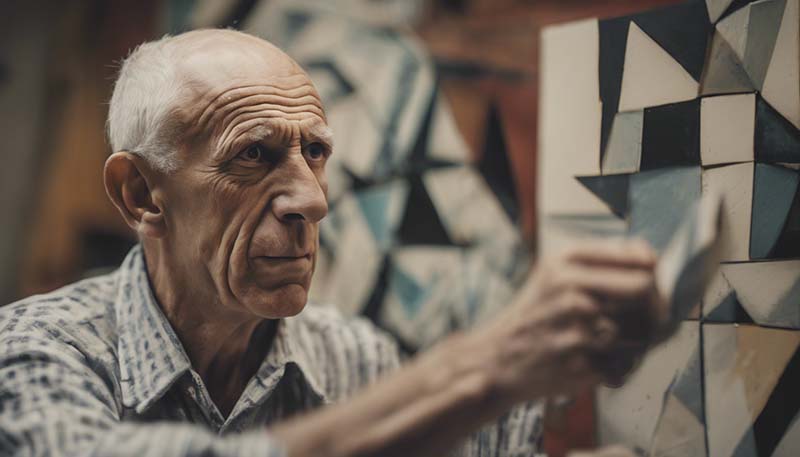Pablo Picasso: The Cubist Revolution and His Artistic Genius
Pablo Picasso: The Cubist Revolution and His Artistic Genius
Pablo Picasso (1881-1973), one of the most influential artists of the 20th century, was a Spanish painter, sculptor, printmaker, and ceramicist. His work is characterized by a relentless innovation and a wide range of styles, but it was the Cubist revolution that marked a significant departure from traditional artistic norms and forever changed the course of art history.
The Early Years and Artistic Development
Born in Málaga, Spain, Picasso showed artistic talent from an early age. He studied at the School of Fine Arts in Barcelona and later at the Royal Academy of San Fernando in Madrid. His early work, known as the Blue Period (1901-1904), was characterized by somber paintings depicting the poor and the outcasts of society.
Following the Blue Period, Picasso entered his Rose Period (1904-1906), where he used warmer tones and depicted characters from the theatre and circus, often with an air of melancholy.
The Birth of Cubism
The year 1907 marked a pivotal moment in Picasso's career with the creation of "Les Demoiselles d'Avignon," a painting that is often cited as the beginning of the Cubist movement. This groundbreaking work was a radical departure from traditional perspective and representation, as it fragmented the figures and introduced a new way of seeing and constructing form.
Advertisement
Cubism, a term coined by the critic Louis Vauxcelles, was developed in collaboration with the French artist Georges Braque. It was characterized by the deconstruction of three-dimensional objects into geometric shapes and the simultaneous representation of these objects from multiple viewpoints.
The Evolution of Cubism
Cubism evolved through two main phases: Analytic Cubism, where objects were broken down into their component parts, and Synthetic Cubism, where different textures and materials were used to build up the composition. Picasso's work during these periods included a variety of subjects, from still lifes to portraits and even abstract compositions.
Picasso's Artistic Genius
Picasso's genius lay not only in his technical skill but also in his ability to innovate and adapt. His work was a constant exploration of form, space, and the nature of representation. Picasso's influence extended beyond painting to sculpture, printmaking, and ceramics, where he continued to push the boundaries of what was possible in art.
Picasso's legacy is vast, with over 50,000 individual works to his name, including paintings, drawings, sculptures, and ceramics. His impact on the art world is immeasurable, with countless artists citing him as a primary inspiration.
Legacy and Influence
Picasso's work has been exhibited in museums and galleries around the world, and his influence can be seen in the works of many contemporary artists. His willingness to experiment and take risks has left a lasting impression on the art world and continues to inspire new generations of artists.
Picasso's Cubist revolution was not just a stylistic shift; it was a fundamental change in the way artists thought about and approached their work. It challenged the traditional notions of beauty and representation, paving the way for a wide range of artistic movements that followed, from Abstract Expressionism to Pop Art.
Conclusion
In conclusion, Pablo Picasso's contribution to the art world through the Cubist revolution and his overall artistic genius is unparalleled. His work continues to captivate audiences and inspire artists, ensuring that his legacy will endure for generations to come.
Further Reading:
- "Picasso and Braque: Pioneering Cubism" by William Rubin
- "Picasso: Creator and Destroyer" by Arianna Stassinopoulos Huffington
- "Picasso's Cubism" by Lynn Zegel
